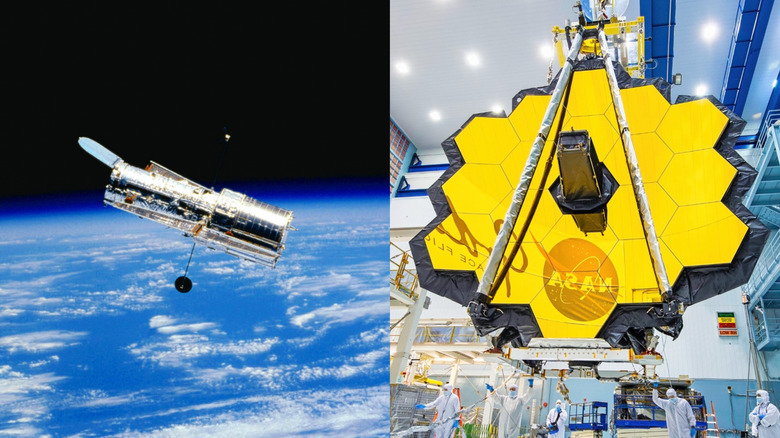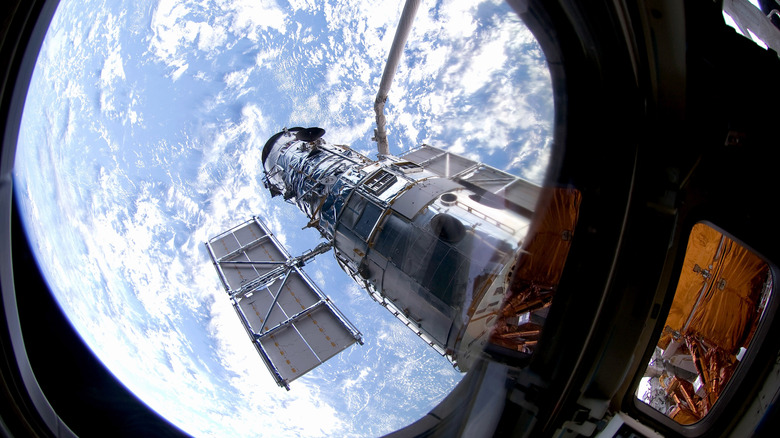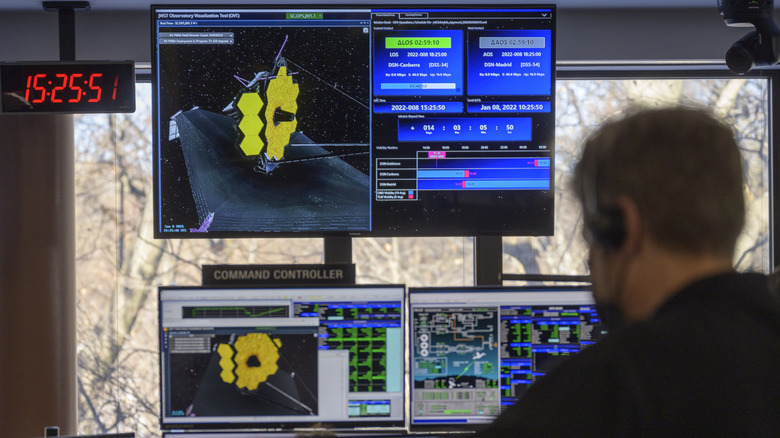What's The Difference Between The James Webb Telescope Compared To Hubble?
When NASA released the first full-color images from the James Webb Space Telescope (JWST) in July 2022, even seasoned scientists were stunned. For many, one image stood out above the rest: an impossibly beautiful shot of the Carina Nebula, a star-forming region 7,500 light-years from Earth, captured in infrared for the first time. "We're scientists and these images are used to do science, but when I saw that one in particular, I felt I was going into an art gallery," René Doyon, a principal investigator on the JWST mission, said during a press conference at NASA's Goddard Space Flight Center. "This is an art piece."
Webb's incredible success didn't come out of nowhere. It was built on the legacy of the Hubble Space Telescope, which launched in 1990 and transformed our understanding of the universe. Hubble gave us our first deep-field views of distant galaxies, captured jaw-dropping images of supernovae and nebulae, and helped establish the age of the universe and the rate of cosmic expansion. To this day, its images fill textbooks, headlines, and laptop backgrounds around the globe, fundamentally reshaping how we see the cosmos.
But Webb wasn't designed to replace Hubble; it was made to see what Hubble couldn't. Hubble primarily observes visible and ultraviolet light, while Webb specializes in infrared, allowing it to peer through cosmic dust and catch faint signals from the earliest galaxies. Together, the two make a powerful pair of discovery tools, providing us with views of phenomena like Neptune's glowing auroras and breaking several records at NASA in 2024 alone. If Hubble lets us look far, Webb lets us look deep. Both were built to help us answer questions about the universe, but the differences between the two reveal humanity's perspectives and approach towards observing the greatest mystery that exists: the cosmos.
The tech that changed our view of the cosmos
Hubble and Webb were built to answer different questions. Hubble orbits Earth at about 320 miles up, making it accessible for repairs (as famously happened after its blurry-vision debut in 1990). Webb, on the other hand, operates from a far more distant vantage point at nearly 1 million miles from Earth, orbiting the Sun at what's known as the second Lagrange point (a point in space where spacecraft can "hover" by utilizing the balancing forces of gravity and orbital motion from the sun and the Earth's interaction. Webb's deep-space post gives it an unobstructed view, but it also means there's no fixing things if something breaks.
One of the most significant differences between the two telescopes is the type of light they can see. Hubble deals in ultraviolet, visible, and just a bit of near-infrared light. Webb sees primarily in the infrared, which is crucial for peering into the early universe. Because of the way light stretches over vast cosmic distances (a phenomenon called redshift), galaxies from the dawn of time emit light that's shifted into the infrared by the time it's reached us. Hubble could hint at these structures, but Webb can resolve them.
Each telescope's instrument suite is likewise unique to it. Both utilize curved mirrors rather than lenses, but Hubble's are arranged in a Ritchey-Chrétien design, meaning its mirrors have a deeper curve than a standard Cassegrain mirror design (which uses multiple mirrors to focus light onto the light-gathering mirror). The result is an image with greater clarity across a wider field of view. Webb, however, contains a three-mirror anastigmat design which uses a (surprise) third curved mirror, letting it capture unprecedented detail from the farthest reaches of space.
Why both Hubble and Webb matter, and what comes next
Collaboration is the key to success, and Hubble and Webb are no different. Their designs reflect different ambitions. Hubble's main mirror is nearly 8 feet across, while Webb's is a staggering 21 feet, enough to capture faint light from far deeper in space and back in time. But Webb's size also means it needs a sunshield the size of a tennis court to keep its instruments cold enough to take proper infrared observations.
Today, Hubble continues to operate, occasionally working in tandem with Webb to observe the same targets at different wavelengths. Each telescope tells a different version of the same cosmic story, just with a different set of "eyes." Hubble's near-infrared capabilities are impressive, but the telescope was designed more for shorter wavelengths of 0.1 to 2.5 microns. Webb's infrared vision capabilities sit at 0.6 to 28.5 microns, making it a far better instrument to capture things like exoplanets and red and brown dwarves (objects too cold to emit enough visible light for us to see) and the light from galaxies around nine times fainter than what Hubble can detect.
Looking ahead, telescopes like the upcoming Nancy Grace Roman Space Telescope will continue this lineage. With a launch date set for 2027, this telescope is being designed to have a field of view 100 times greater than that of Hubble's, and will help scientists answer questions about dark energy, exoplanets, and planetary systems in our galaxy. These observatories represent the pinnacle of human ingenuity, engineering, and collaborative scientific effort. Ironically, in an age when a startling number of people can't even see the Milky Way galaxy, our species is rapidly gaining an unprecedented look into the universe.


